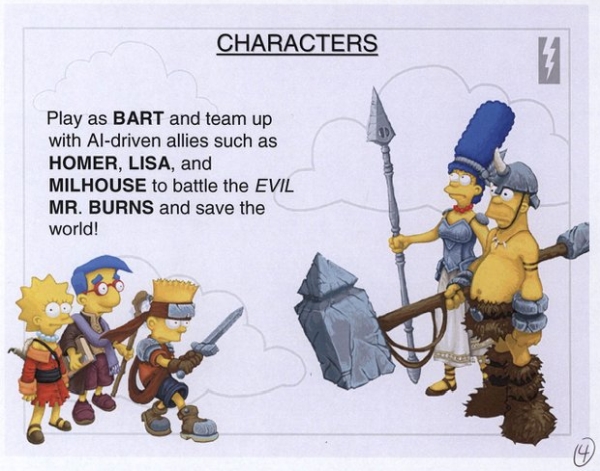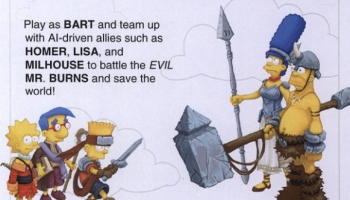
Everybody has to get their start somewhere.
For a lot of developers, that start often comes from an opportunity that’s slightly outside the game industry. But even after they’ve been at it for a few decades, some veteran designers need to get to a place where they can restart. And you can’t have a beginning without something else ending, like the game industry’s transition from CES to E3 in 1994-1995.
We’ll talk about all of these scenarios in this edition of Bite-Sized Game History.
![]() You can find a lot of dedicated video game historians on Twitter, and in 280 characters or less, they always manage to unearth some amazing artifacts. Bite-Sized Game History aims to collect some of the best stuff I find on the social media platform.
You can find a lot of dedicated video game historians on Twitter, and in 280 characters or less, they always manage to unearth some amazing artifacts. Bite-Sized Game History aims to collect some of the best stuff I find on the social media platform.
John Tobias famously got his start in the game industry at Midway when he was just 20 years old. Though still too young to enter the bars where many of Midway’s games were located, his initial success developing artwork for Smash TV led to further opportunities with the company, including the freedom to team up with Ed Boon on the creation of the Mortal Kombat franchise.
But before all that, Tobias’s original dream was to break into the comic book business, and his first job fresh out of high school was as a penciler on an adaptation of The Real Ghostbusters for Now Comics. He shared a single panel from this previous life earlier this month when Ghostbusters fans around the world were celebrating the 36th anniversary of the original film’s theatrical debut:
In another life I pencilled The Real Ghostbusters comic book… here’s a panel… #GhostbustersDay pic.twitter.com/213NpOSkAH
— John Tobias (@therealsaibot) June 9, 2020
Don Daglow got his start as a game developer in 1971, programming the very first Baseball sim on a PDP-10 mainframe while still in college. After graduating, Daglow found his niche in the sports simulation world, producing 1983’s Intellivision World Series Baseball, 1987’s Earl Weaver Baseball (one of the first games published by EA Sports), and 1991’s Tony La Russa Baseball. And during a short stint in Broderbund’s executive suite, Daglow used his influence to secure publication deals for classic titles such as Where in the World is Carmen Sandiego?, Prince of Persia, and SimCity.
Daglow is also well known for his work in the RPG genre, including two titles in SSI’s popular Gold Box series (1991’s Gateway to the Savage Frontier and 1992’s Treasures of the Savage Frontier), the first graphical MMORPG (1991’s Neverwinter Nights), and EA’s first foray to Middle-Earth (2002’s The Lord of the Rings: The Two Towers).
After producing the latter game, Daglow took his talents to Vivendi Universal to pitch The Simpsons Adventure, a medieval RPG starring Bart, Lisa, Homer, and Marge. According to the curators at the Strong Museum of Play, this presentation featured character sketches, various scene styles, and demos that transported the sitcom’s characters into a medieval world.
We’ll probably never know why Vivendi Universal and Fox passed on the pitch (perhaps it was too different from the then-recent The Simpsons: Hit & Run), but considering the enduring popularity of the annual Halloween episodes (as well as one-offs like “Simpsons Bible Stories” and “Simpsons Tall Tales”), I think it might have been a big hit. You can see a piece of concept art from The Simpsons Adventure shared by The Strong here:
Eight months. 169 boxes. 1,270 folders. 1,314 objects. Read more in the latest Play Stuff blog—Unboxing the Past: The Don Daglow Papers. https://t.co/oiSQkTWwgW pic.twitter.com/uribj3pWdF
— The Strong Museum (@museumofplay) June 14, 2020
The E3 Expo spun off from the Consumer Electronics Show in 1995, but what was the final time visiting the Las Vegas Convention Center like for game publishers and the media in 1994? Game Informer’s Andy McNamara recently shared a look at his pin collection from the event, including quite a few fantastic pins from Sega:
Look at this find. My media badge from the last CES before E3 started. Check out that Eternal Champions pin! I don’t need this but feel guilty just throwing it away. pic.twitter.com/HtXVvGiD2Q
— Andy McNamara (@TheRealAndyMc) June 20, 2020
Thanks to John Tobias, Andy McNamara, and the Strong Museum of Play for sharing these trips down memory lane. And if you’d like to get your start with more Bite-Sized Game History, be sure to follow me on Twitter.

